Sealife guideThe many-ribbed jellyfishAequorea forskalea
Last updated on 08/20/2024 at 08:58 PM
Taxonomy
- Common name: Many-ribbed jellyfish, crystal jelly
- French name: Méduse équorée
- Scientific name: Aequorea forskalea (Péron & Lesueur, 1810)
- Family name: Aequoreidae
- Order name: Leptothecata
- Class name: The hydrozoans [Hydrozoa]
Description
The many-ribbed jellyfish is recognizable by its dark bell which features a network of brown to dark blue channels converging from the edges to the center. Long, slender tentacles extend from the bell. This jellyfish is a hydromedusa with a maximum diameter of up to 10 inches.
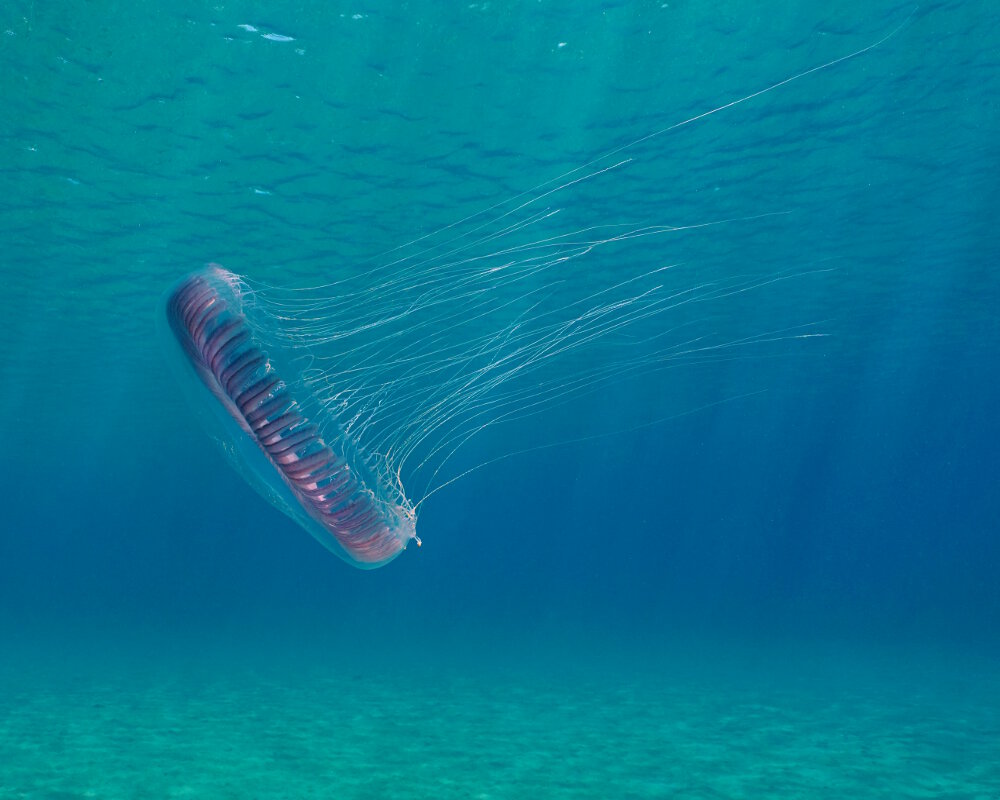
The many-ribbed jellyfish (Aequorea forskalea) © Seadam | Dreamstime.com
The many-ribbed jellyfish is not very stinging unlike its cousin the purple-striped jelly !
Geographic range
The many-ribbed jellyfish mainly inhabits the warm waters of the North East Atlantic Ocean, the Indian Ocean and the Caribbean Sea. It is only rarely found in the Mediterranean Sea where it has started to make occasional repeated appearances.
Diet
The many-ribbed jellyfish feeds on small prey that become trapped in its tentacles, which act like fishing nets.
Reproduction
Like all hydrozoan jellyfish, the many-ribbed jellyfish follows a reproductive cycle that alternates between asexual and sexual phases. Initially, polyps attached to the seabed in colonies transform into male and female jellyfish. These jellyfish then release gametes into the water, leading to the fertilization and development of larvae. These larvae settle on the seabed and form new colonies of polyps.
Did you know ?
Like other jellyfish species in the Aequoreidae family, the many-ribbed jellyfish also appears to be both luminescent and fluorescent, thanks to two proteins: GFP (Green Fluorescent Protein), which is responsible for fluorescence, and aequorin, which is responsible for luminescence.
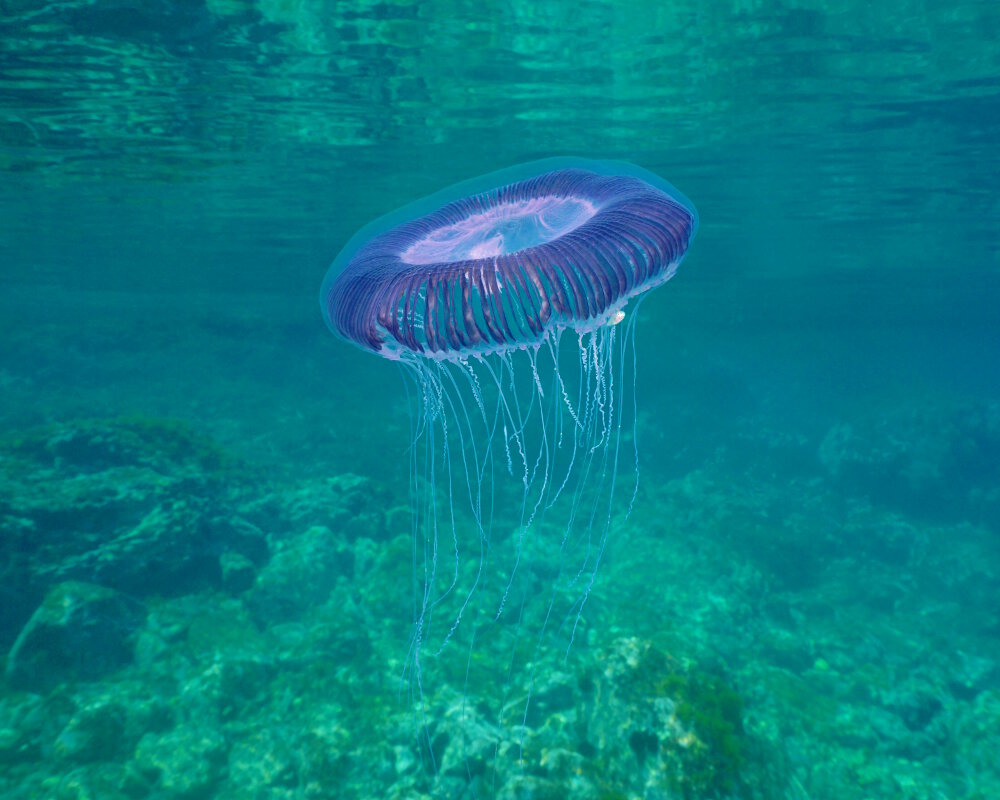
The many-ribbed jellyfish (Aequorea forskalea) © Seadam | Dreamstime.com
The Aequorea jellyfish can be subject to occasional parasitism in the gonads by an amphipod, Hyperia medusarum, particularly during the breeding period
The many-ribbed jellyfish were observed in large numbers floating at the surface along the southern coast of France between St Cyr sur Mer and La Ciotat, and some even washed up on the beaches in April 2021, as well as along the coast of the Pyrénées-Orientales in late May 2023.
When the many-ribbed jellyfish is found stranded on the beach with only its bell remaining, it resembles a bluish pineapple slice.
Discover also
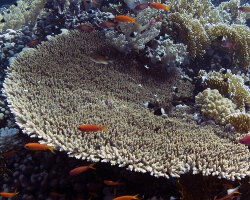
Acropora pulchra coral
(Acropora pulchra)
(Acropora pulchra)
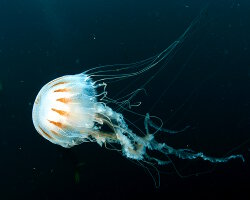
Atlantic sea nettle
(Chrysaora quinquecirrha)
(Chrysaora quinquecirrha)
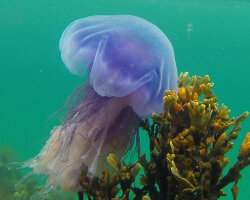
Blue jellyfish
(Cyanea lamarckii)
(Cyanea lamarckii)
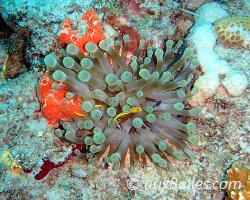
Giant caribbean anemone
(Condylactis gigantea)
(Condylactis gigantea)

Magnificent sea anemone
(Radianthus magnifica)
(Radianthus magnifica)

Portuguese man of war
(Physalia physalis)
(Physalia physalis)
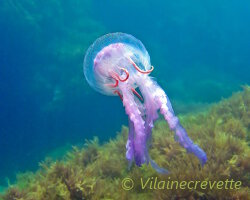
Purple-striped jelly
(Pelagia noctiluca)
(Pelagia noctiluca)

Staghorn coral
(Acropora cervicornis)
(Acropora cervicornis)
Our latestUpdates

Friday, January 10th 2025
Hvar island
Hvar, a jewel of the Adriatic, captivates with its turquoise waters, wild coves and fragrant lavender fields. Between medieval villages, lively ports, and lush hills, Hvar island offers the perfect mix of relaxation, culture and breathtaking landscapes. Ideal for sun, sea and authentic experiences.

Thursday, January 9th 2025
The lemonpeel angelfish
The lemonpeel angelfish is a small, brightly colored reef fish found in the tropical waters of the Indo-Pacific ocean. It inhabits shallow coral reefs, sheltering among corals and rocky crevices.

Friday, December 19th 2025
The magic of Christmas decorations
Discover Christmas decorations in Florida: giant trees, illuminated palm trees, magical light displays and tropical settings to experience the holiday magic under the sun.
Photo of the Day

Poisson perroquet princesse
(Scarus taeniopterus)
(Scarus taeniopterus)
